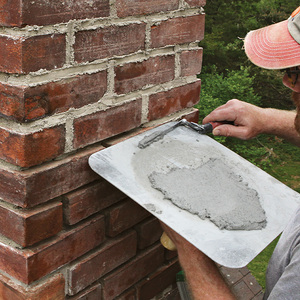This kind of stuff gets me all lathered up….using math and science to predict real world outcomes. In this case…I want to use some math to predict roughly what the tightest radius a certain laminate thickness can bend to…..before it breaks.
I always have wondered this and never knew how to go about figuring it. I never have seen this posted anywhere….or read it out of any book. Its an odd topic…but this keeps my enthusiasm for my occupation higher than when I first started bending wood years ago. I never have needed a formulae…can live without a formulae….but dog gone it….its nice to be able to back up mathematically what your real world experiences show.
The question to be answered then is how to figure roughly what radius a laminate can be bent to,,,just before any tighter and it will break.
To find this answer, I started doing some research two weeks ago. My digging came up with a nice way to compute this.
All materials have what they call a “modulus of elasticity”
These numbers have been established in labs on most materials…and basically the lab measures first how many pounds per square inch of pressure a certain material will break at. In this case….hard maple. Hard maple at 12% moisture content..takes around 13400 pounds per square inch to break it. This is its yield level.
Next, the lab measures what fraction of an inch this sample of hard maple actually stretches in length along its grain when this max load is applied. This length of stretch divided by the amount of stress is the modulus of elasticity number. Hard maple starts to yield after its fibres stretch 0.01425 inches per inch of length. Dividing the force doing this of 13400 into this stretch figure gives 940,000 as its modulus of elasticity. This number is so special as it can now be used to calculate any thickness of a certain species of wood…and then know roughly what radius it will break or yield at.
My case was an exact 1/4 inch thick laminate of hard maple.
When you bend any laminate around a radius….the inside of that laminate will compress ….while the outside of the laminate will stretch. Any laminate will have a neutral axis where this distance remains the same. You first must determine where this neutral axis is in the laminate. Near the center?…at the center?…near the inside of the curve? How do I find out?
I thought about this and took this strip of maple and bent it around a radius that was pretty tight….14 inches. I computed the distance for a 1/4 circle at this radius and cut the laminate to that length.
I then placed a strip of paper and marked the relaxed ..or straight lenght of this laminate.
Next I bent this laminate in a 14 inch radius jig….designed so that I could measure the inside and outside surface length of this laminate while bent.
I simply placed the strip of paper on the inside of the laminate and marked that length….then did the same on the outside of the laminate…and recorded that length with a mark.
I noticed the neutral length mark was exactly in between the inside mark length and the outside mark length. The compression forces shrank the inside measurement exactly the same distance shorter than the outside measurement showed was being stretched. The difference between this short and long measurement of course were the calculated circumference difference that a 1/4 inch increase of radius would make happen.
These equally compressed and tensioned sides showed to me that the neutral axis of this laminate was right down the center. Then it is just a simple math to compute what the outside surface is stretching as it now bends 1/8 of an inch larger radius than this neutral core.
Doing the math for a circumference of a circle shows that a 1/8 inch radius increase causes a constant length change of 0.1963 inches every 90 degrees.
This wood will break when stretched more than 0.01425 inches per inch.
Long story short…..these calculations show that when a radius of 8.775 inches…or slightly more than 8 3/4 inches…is reached…any tighter and its right at the busting point.
It was just a matter of dividing the length change of 0.1963 inches by the 90 degree circumference length measures until 0.01425 is arrived at.
I computed the 90 degree circumference length of a circle with a 10 inch radius. This is 15.707 inches. Dividing the stretch length of 0.1963 by 15.707 gives you a stretch of 0.0124 per inch. Less than the 0.01425 it takes to break it.
So now I figure a 9 inch radius circle….and one quarter of this measures 14.137 inches that now when divided into 0.1936 inches gives a stretch number of 0.01388 inches …almost the breaking point!
Plugging in the numbers shows that a radius of 8.775 inches like mentioned earlier will break this piece….
If you calculate an 8.5 inch radius circle…we now have 13.35 inches going into 0.1936 inches,,,and this comes up with a 0.0145 stretch figure which exceeds the yield point.
I anxiously built some real world test forms of ever tightening radii….and was pleased to see that as I approached just slightly over the 8.775 inch breaking radius…at 9 inches…I could just get that laminate bent. As I went to an 8.5 inch form which should be 1/4 tighter than what it takes to break it…I was pleased as I ever so slowly bent the laminate….that it rewarded me with a loud snap!
This was so pleasing to have a real world experiment match a calculated result.
Of course there are variables in wood….etc….and this is not intended to sound like anyone can compute within a 1/4 when any species of wood will yield at….but rather a confident rough estimate. It just so happened my wood sample broke so pleasingly close to the calculated estimate.
This may be extremely boring to some…and I understand that….but to me …this keeps my zest up as I try to understand why things do as they do.
Stan



















Replies
That is cool, Stan.
I once studied Modulus of Elasticity for an interesting project (weight scales for circle track race cars) and discovered many uses for the calculations. It is used in design all the time...
A phone's keypad, for instance.
Weight Scales.
Lumber Span charts.
Golf clubs.
Springs.
You've "discovered" one of the advanced calculations engineers use to make everyday items more efficient/useful to humans.
A La Carte Government funding... the real democracy.
Having a background in Lutherie , I find it very not-boring. We'd often employ heat (dry) for bending instrument sides.
Imagine what you can achieve when you factor in steam or dry heat.
Thanks for the topic, and well explained post.
Spheramid Enterprises Architectural Woodworks
Repairs, Remodeling, Restorations
"If Brains was lard, you couldn't grease much of a pan"
Jed Clampitt
View Image
The question to be answered then is how to figure roughly what radius a laminate can be bent to,,,just before any tighter and it will break.
Stan,
For a guy who is not an engineer by trade you've done a good job of getting at the mechanics of materials. The modulus of elasticity (E) is not about the yield stress, it's about the stretchability of the material. Think of the material as a spring. If I take a 1" by 1" by 10" long piece of stock and I hang a 100 lb weight from it then the stress is 100 psi. If I measure that the stock increases in length by 1/100" then the strain is 1/100 divided by 10 or 1/1000. The modulus is stress/strain or 100,000psi. The modulus has nothing to do with the yield stress.
What you need is this formula: stress= bending moment x half the thickness of the stock/ moment of inertia. When the stress reaches the breaking stress of your species of stock you have a high probability of a failure.
If you want to go further on bending moment and moment of inertia shoot me an email. JLC has a good explanation of it in their structural book. You will not need an engineering degree to follow.
Mike- Thanks for your reply. Let me restate in brevity what or how I feel modulus of elasticity is defined.
I interpret it as taking the yield force of the wood sample ....the force that when applied starts to cause the wood to fail. When this wood is held at this pressure...the result of that stress causes X amount of movement per inch.
My sample of red maple shows it having a modulus of elasticity of 940,000....with a yield of 13,400 pounds. Simply dividing the 940,000 into the yield of 13,400 comes up with 0.01425 of an inch that this pressure causes this wood to stretch per inch.
This all seems to fit with my math of taking the amount of 1/2 the laminate thickness...1/8 of an inch...and mathematically computing what radius the outside of the laminate needs to be bent at to cause its outside skin to stretch more than 0.01425.
Thanks again for your input or any other things you would want to steer me closer to actualilty.
Stan